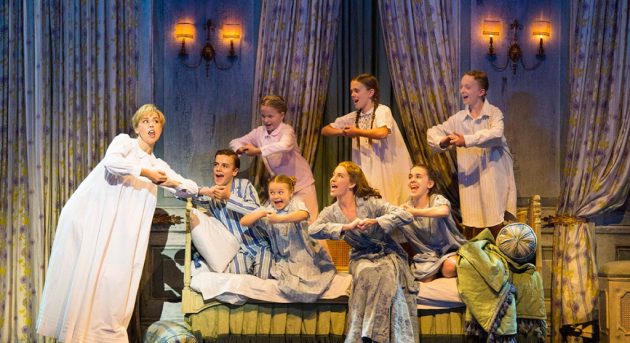The Sound of Music, Sydney season
The Sound of Music, that grand sentimental fare best known as a film from 1965, has come to Sydney’s Capitol Theatre just in time for all that holiday-inspired nostalgia and family bonding. With a sweet frolic of a score (Rodgers and Hammerstein, of course), and a fairly solid 1950s book (by Howard Lindsay and Russel Crouse), this is a musical that has climbed firmly into the cultural consciousness and has refused to let go.
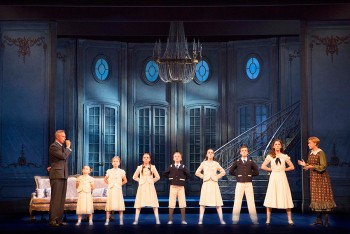
Now, on stage, it’s a bit of a mixed bag.
It’s not that there’s no need for sentiment in a more cynical age; there is. As time passes, the love story between Maria, the Captain, and the family is the most enduring and most successful aspect of the show even despite the unevenness of this particular production. Re-discovering love, the benediction that comes from assuring a person that yes, they may still be happy in darkest times and after suffering tragedies, and empowering someone to look for a new path — these concepts can still work in 2015.
Amy Lehpamer is our beacon towards this truth as Maria and she does that pretty well. She’s a scrappy, funny colt of a young woman with a refreshing quality that could be described by the Mother Abbess (Jacqueline Dark here): “a great capacity to love.” Lehpamer sings with a pleasing sense of liberation, like what that brook that trips and falls would probably sound like, and has an appealing comic sensibility. It’s all a bit light and airy, her approach, but there’s something about Lehpamer that keeps us engaged.
Dark’s Mother Abbess delivers where she needs to: her “Climb Ev’ry Mountain” is glorious, sung as it needs to be sung (technically sound, assured without being bombastic, warm without treacle) and, when it’s sung so well, it really helps place Mother Abbess more firmly in the show as Maria’s mentor and confidante. That one number helps ground the show in something a little more substantial, even if only for a few minutes.
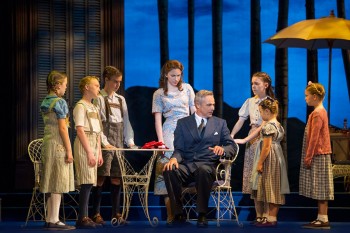
The last component that really needs to work if this production is only about heartstrings (and it is), and crucial for any kind of cohesive enjoyment of the show, is the children. Maria and the Captain must fall in love with them and they with them; they must be clever and charming without being cloying; they must, must feel like real children. On opening night the children (Stefanie Jones as Leisl, Jude Padden-Row as Friedrich, Savannah Clarke as Louise, Louis Fotaine as Kurt, Madison Russo as Brigitta, Erica Giles as Marta and Nakita Clarke as Gretl) delivered on all of this and more, appearing for all the world like a family and picking at each other and doting on each other like real siblings.
But this show actually could be more than a good old smile-cry.
There are plenty of things now that don’t quite work, or in this production don’t quite strike the right tone. “No Way to Stop it”, Baroness Schraeder (a very fine Marina Prior) and Max Detweiler’s (a tiresome David James) painfully self-serving ode to not fighting against incoming Nazi forces, is played without any incisiveness; in this production, this action plan of the one percent sort of gets framed like a good one.
Cameron Daddo is a stoic Captain Von Trapp (more wooden than man repressed, unfortunately), which leaves his refusal to play nice for the German troops without any real fire or support; he reads more stubborn than principled, and this undermines the production (directed by Jeremy Sams, overseen here by Gavin Mitford) when it tries to get a little more real with the fraught historical background of this singing-nun story.
When the musical suddenly strives for serious political commentary in the second act, dropping banners with swastikas into the audience during Detweiler’s music festival, it feels heavy-handed and ill-considered; when we can’t feel the threat of occupation growing, when the Captain and Rolf (Du Toit Bredenkamp) and Franz (Philip Dodd) are more consistently comic than they are complex, the tonal shift from ‘light family musical’ into ‘bold confrontation of history’ fails. It feels awkward, like trying to find deeper waters in a shallow pool.
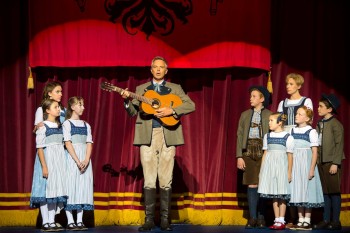
The Sound of Music premiered on Broadway in 1959, at the tail end of the golden age of musical theatre that really started with another Rodgers and Hammerstein show, Oklahoma! These musicals were exciting because they were ambitious. Their scores were gorgeous, but the books of these musicals were creating an exciting movement that said musicals could actually be about something.
While they aren’t socially complex by 2015 standards (indeed, these musicals need sensitive eyes these days to retain their progressive spirit without being culturally inoffensive; they should advance with us) they certainly are by 1950s standards.
Frequently, these book musicals like South Pacific, to name just one, would use their scenes without songs (now fleshed out) to explore prejudice, oppression, and other social problems.
In this period, it became clear that musicals could be about something substantial.
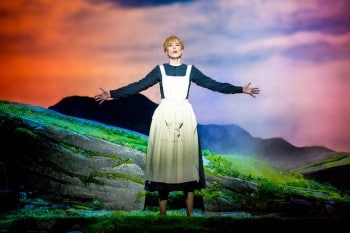
The Sound of Music has always been on the softer side of this shift, but it is a work that proudly defies a devastating regime, celebrates idealistic ideas of freedom and liberation, separates money from happiness, and suggests a certain liberation in being outside the norm: being politically progressive, leaving behind religion to find your truest version of love, easing discipline in favour of personal connection.
It’s a shame that so many of these things are flattened in this production.
It doesn’t help that the set – the touring version of the London Palladium set, by Robert Jones – is so small that it looks absurd on stage at the Capitol, with lighting design by Mark Henderson that doesn’t clarify or interact with the set, instead leaving Salzburg looking perennially overcast.
Some care is taken to make the show a little less regressive for women, thank goodness – Maria’s “you belong to him” line has been re-phrased for the infinitely more equal “you belong with him,” which helps. “Sixteen Going on Seventeen” still requires a little more challenge or wryness in its staging to not feel a little disturbing, but this production does some work in its direction to resolve the language; Stefanie Jones’ Leisl seems to have a sense of agency and of self, which does help.
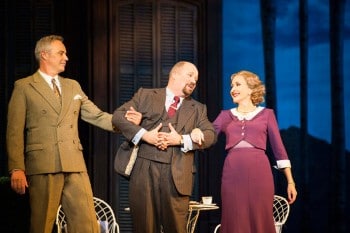
When the darker counterbalance built into the show’s DNA needs to be discounted because it feels unearned, even silly, then the story of the show isn’t solidly framed, then only thing you’re left with is feeling. That’s it. Give way because all we’ve got is sentiment upon sentiment.
Faith, love and kindness, graceful retreats, and children singing. Flimsy, but fairly beautiful. And it’s not nothing, certainly not. I wanted more sustenance, but whether this is enough for each audience member will be entirely up to them.

